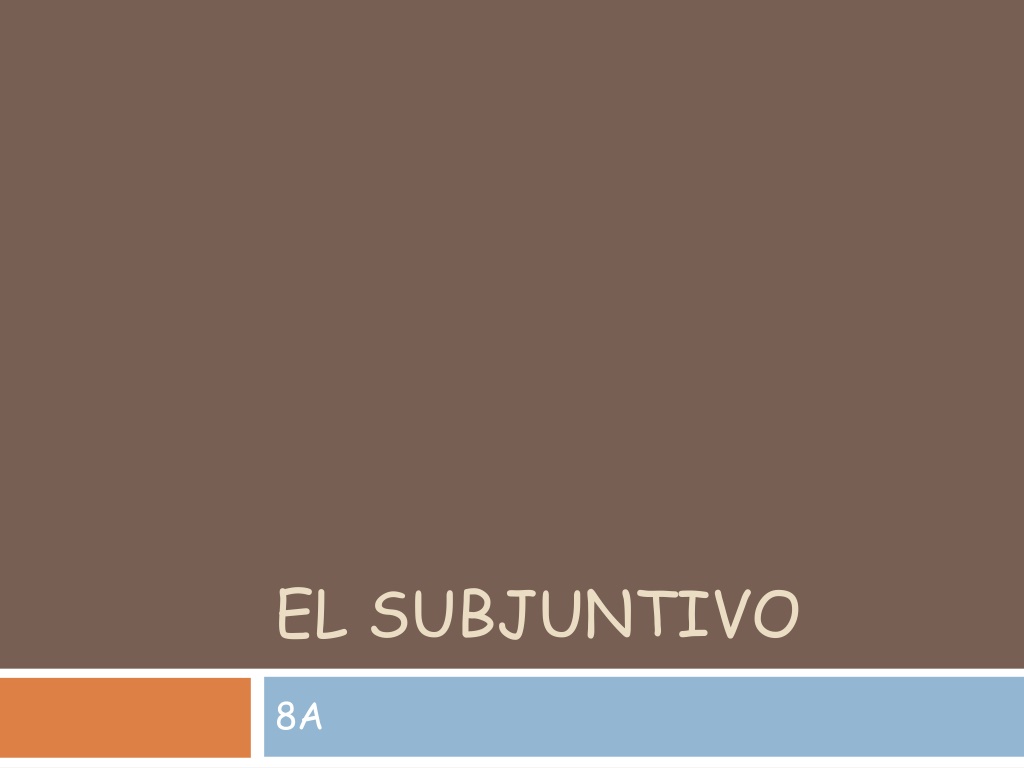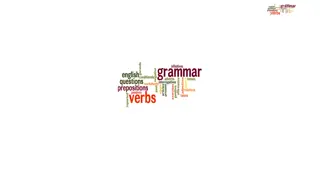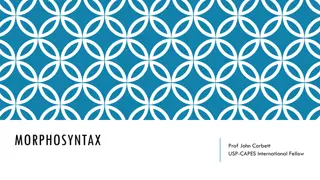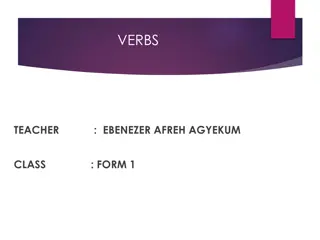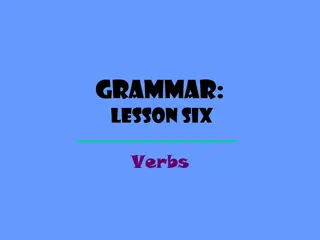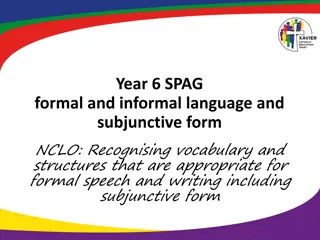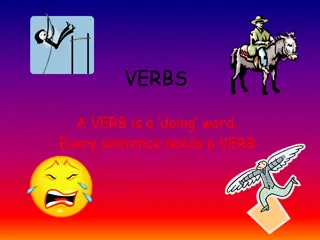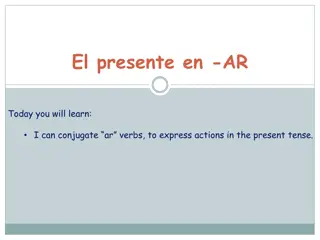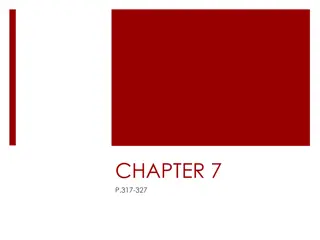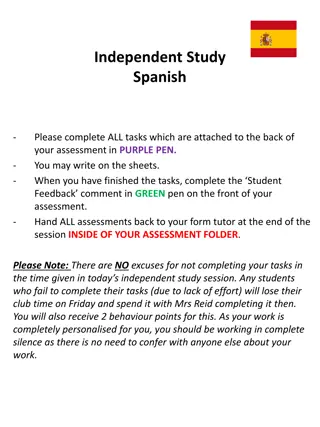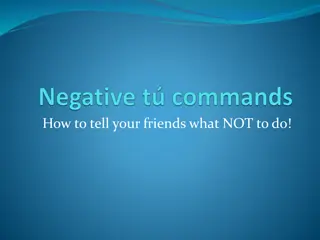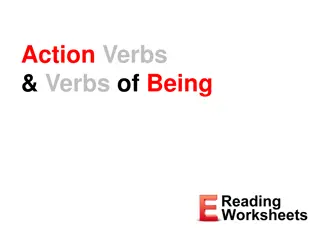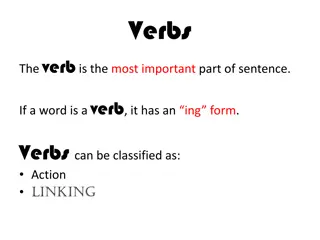Understanding the Subjunctive Mood in Spanish Verbs
Verbs in Spanish show the action, tense, and mood. The subjunctive mood expresses uncertainty, doubt, and emotional reactions. Learn about indicative vs. subjunctive, forming the subjunctive, setup words, and more to master this aspect of Spanish grammar.
Download Presentation

Please find below an Image/Link to download the presentation.
The content on the website is provided AS IS for your information and personal use only. It may not be sold, licensed, or shared on other websites without obtaining consent from the author. Download presentation by click this link. If you encounter any issues during the download, it is possible that the publisher has removed the file from their server.
E N D
Presentation Transcript
Verbs show the action and they also show a tense and a mood. The mood tells the speaker s attitude towards the action. Indicative, commands and the subjunctive are moods. The tense tells you the time of the action Present, preterit, future, etc are tenses.
INDICATIVE VS SUBJUNCTIVE You are late. It is important that you be on time. I am sick. I wish I were not sick. Juan studies The teacher insists that he study.
What is the subjunctive? The present subjunctive is a mood in Spanish. It is used to express uncertainty, doubt, emotional reaction, or future actions. The subjunctive conjugation of a verb is usually used in the second part of a sentence. For example, I may say, I want you to study. You may or may not do it, so the word to study would be conjugated in the present subjunctive.
Setup Words These words, used in the first clause of a sentence, set up the use of the subjunctive in the second clause. What is said after these words may or may not happen, so the conjugation of the second verb is not the present tense as you know it. querer (ie) = sugerir (ie) = recomendar (ie) = insistir en = esperar = ojal que = to want to suggest to recommend to insist to hope hopefully / it s hopeful
Subjunctive in Context To set up the subjunctive there are three things that must be in the sentence. 1. One of the setup words 2. The word que 3. A verb that shows a subject change
Notice that the SUBJUNCTIVE MOOD consists of two clauses, joined together by que : It is bad -Es horrible It s scandalous wearing that dress. -Es escandaloso It bothers me come. -Me molesta that que that we can t go. no podamos ir. she is que ella lleve ese vestido. he can t that que l no pueda venir
Forming the Subjunctive In order to conjugate a verb in the present subjunctive, you have to know well the conjugations of the present indicative (the present tense that you already know). 1. First: hablo Put the verb in the yo form of the present tense. como vivo 2. Next: habl_ Drop the o com_ viv_ 3. Last: endings, hable Add an opposite ending. This means for -ar verbs, use -er and for -er/-ir verbs, use -ar endings. coma viva
A. Rewrite the following verbs in the subjunctive. Yo T l Nosotros Ellos Hablar ____ ____ ____ ____ ____ 1. 2. Comer ____ ____ ____ ____ ____ 3. Dormir ____ ____ ____ ____ ____ (o-ue) 4. Leer ____ ____ ____ ____ ____ 5. Pensar ____ ____ ____ ____ ____ (e-ie)
B. Traduzca al espaol. I recommend that you have your passport. 1. 2. We suggest that they (boys) drink their water before (antes de ) boarding. 3. I want that you talk to the travel agent tomorrow. 4. You prefer that the plane leaves early. 5. The pilot wants that the passengers listen.
